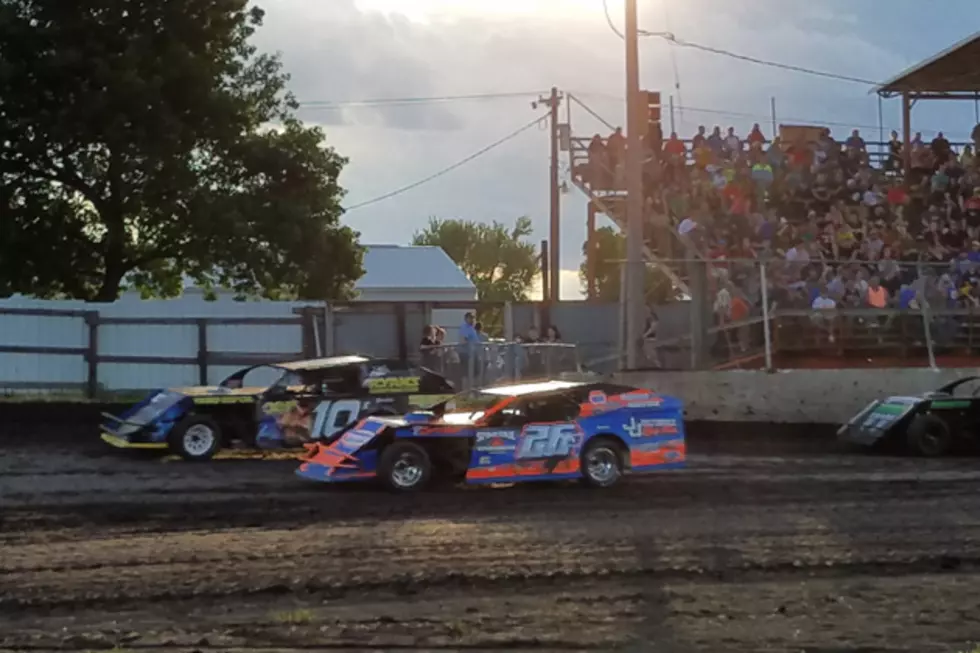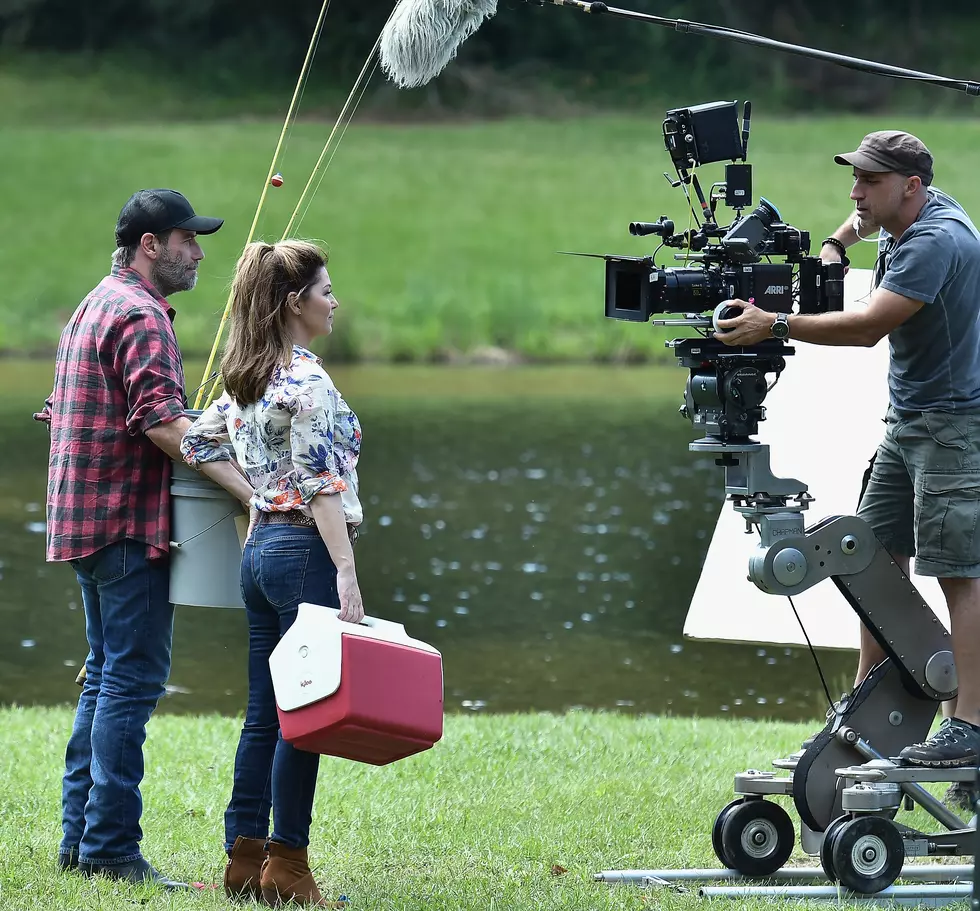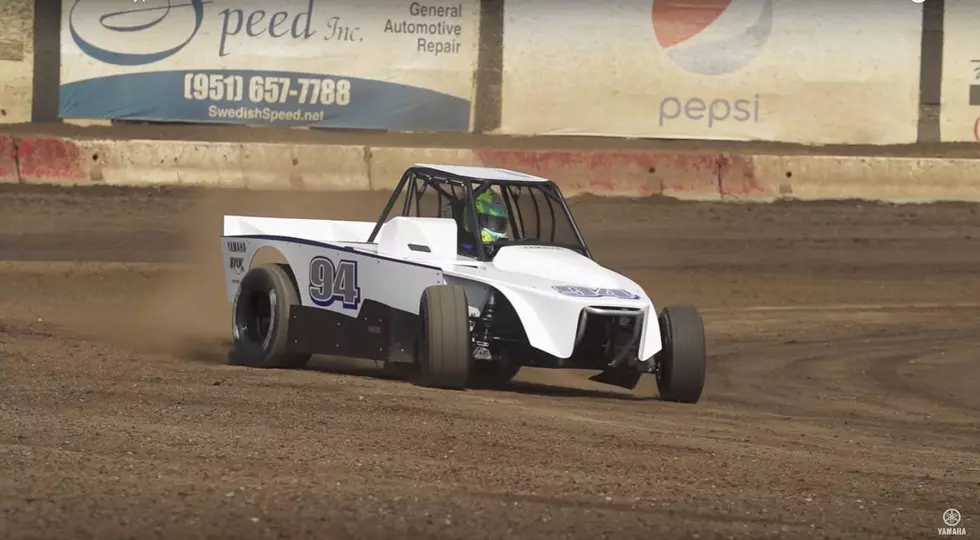
Flag Waving Dirt Track Racing Fans
I've been on the quest to try and figure out what makes the perfect night at the race track. We've heard from dirt track racing fans. This go-round, we hear from some the flagmen on the Iowa dirt track scene.
To be honest, trying to pinpoint thee one thing that makes the perfect night is beyond impossible. All of us have different tastes, and to be fair, we expect different things from our night at the track. Fans expect a different experience than drivers. Officials and promoters have a different list of expectations than the media.
My goal with this series of “What Makes the Perfect Night at the Race Track” is to help educated what these four factions think and feel. Fans, drivers, officials/promoters, and media have the same passion, but all four hope for different things when they come to live the #IowaDirt life.
A majority of the fans felt that car count was the biggest contributing factor to the perfect night. A few other key factors included how efficient a race program was run, racy track, heritage of the event/track, and modern facilities just to name a few.
When they get the chance to participate as a fan, I would venture a guess that most flagmen would agree with that list, but when they stare down a 24-car field coming off of turn four, they have a completely different set of hopes for a perfect night at the race track.
The four flag wavers that I chatted with may have expressed what makes their perfect night in different words, but there was a common thought between them.
Doug Haack has been apart of the the #IowaDirt scene for decades doing different jobs along the way. Nowadays he flags weekly at Farley Speedway, West Liberty Raceway, and Dubuque Speedway. You can also find him at few other tracks from time-to-time waving the sticks for special events.
A perfect night for me is when I don't have to come into play on the outcome (of a race),” Doug Haack
“A perfect night for me is when I don't have to come into play on the outcome (of a race),” Haack stated about his perfect night at the track.
“A smooth and efficient program,” is what Independence Motor Speedway flagman Wes White offered as his perfect night. “At most times, track conditions are out of everyone's control, a perfect night for me would be running a fast, smooth program.”
“Mother Nature's cooperation,” laughed Paul Sobolik who flags at Cresco Speedway, Fayette County Speedway, and Upper Iowa Speedway. “Seriously though, how quick I, as an official, can run the show.”
“A perfect night?” thought Logan Kelly who flags at Buena Vista Raceway, Jackson Motorplex (MN), Kossuth County Speedway, and occasionally at Clay County Speedway. “We should be done and out of there in 4 hours with 125 cars.”
The flagman is a huge part of how efficient a race program is run, and all four I chatted with felt that it was the most important job of a flagman.
Fans might think that the flagman has the best spot in the house to watch a race. For the most part, that is true, but that doesn't mean they watch the race the same way we as fans do.
“As a flagman, I don't get to watch a whole lot,” Sobolik admitted. “But most fans say that I have the best seat in the house. I try to watch everything for the first five laps. After that, I just watch the front stretch and my corner people watch everything else.”
“I don't get to watch nearly as much racing as people seem to think,” Kelly expressed. “Some fans and drivers think that I just get to stand up in the flagstand and watch everything, and that's just not the case.”
The fact of the matter is that you can't see everything all of the time. Each flagger I talked to mentioned how they search for potential trouble on the track. They don't really get to watch the race for the lead or a three-car battle for fifth. They have a more important duty, safety.
Bottom line is driver safety. That's my number one concern.” Wes White
“Very little,” White replied when asked how much of the actual race he sees from the flagstand. “Mostly I am trying to scan the whole track. I'm looking for debris, wrecks, or anything that would require a caution. Bottom line is driver safety. That's my number one concern.”
“As the race goes on, you can kind of tell which cars you could potentially have a problem with, so I try to focus on that,” admitted Kelly.
“In the beginning of every race,” Haack explained his process of overseeing each race. “My eyes go immediately to turn one. I want to make sure there is no fuel flying in the air and to make sure they all make it through okay. Once the cars get single file, it gets pretty easy from there. I always watch a group of cars that might cause a caution. The RACEciever has made the job a lot easier and safer.”
That thought process does effect them some when they try to enjoy a race as a spectator. It can be more like homework at times than entertainment, but that doesn't mean they do not enjoy the night. It's just different than how a fan watches a race.
When I go to a race to watch, I am always analyzing on how things work,” Paul Sobolik
“When I go to a race to watch, I am always analyzing on how things work,” Sobolik explains. “Whether it's something I could do better, or something that the track can do better. It's difficult for me to just sit and watch a race and enjoy it. My mind is always thinking.”
“I try to watch it all but that is almost impossible,” Haack admitted.
He watches a race in a similar fashion as when he's up in the flagstand. “It seems that when trouble starts, I'm pretty much looking at it.”
“I think that it's true in any aspect of life, but it is also where you learn,” White stated. “You saw it different than that a track official did, and that is where you realize everyone sees things differently.”
That is an important lesson I think most track officials have learned over the years, and it's a nice reminder when they get a little time to try and be a fan. It's those situations though that can create some tense moments for any track official. It can make the job a thankless one, but the four flag wavers have done a good job of not letting it bother them.
“Honestly, I've been fairly lucky with not being yelled at a lot, but it does happen,” Kelly recalls. “It's all part of the job.”
“If you treat everyone the same you don't get yelled at very often,” Haack added.
Despite the potential 'heated moment' or two, they keep coming back for more.
“Dirt track racing is in my blood,” Sobolik explains. “I keep coming back because I love what I am doing. I have only got yelled at three times total in eight years. The satisfaction that the drivers and fans like the job that I do is what brings me back year after year.”
“It has to be the atmosphere,” White said. “That has a lot to do with it. The friendships, rivalries, and on top of it all, I have one of the best seats in the house.”
Being a flagman is something I had wanted to do since I was 6 years old,” Logan Kelly
“Being a flagman is something I had wanted to do since I was 6 years old,” Kelly smiled. “I finally got the opportunity in 2015 at Kossuth County. I have an absolute blast doing it. I really like the relationships I've built with the drivers and their crews. I always get to meet new people. I've met people from all over the country at local tracks, and that's what I love.”
“I really enjoy flagging race cars,” admitted Doug Haack. “I love to be a part of the racing scene, and as long as promoters want me, I will be around.”
More From K92.3









